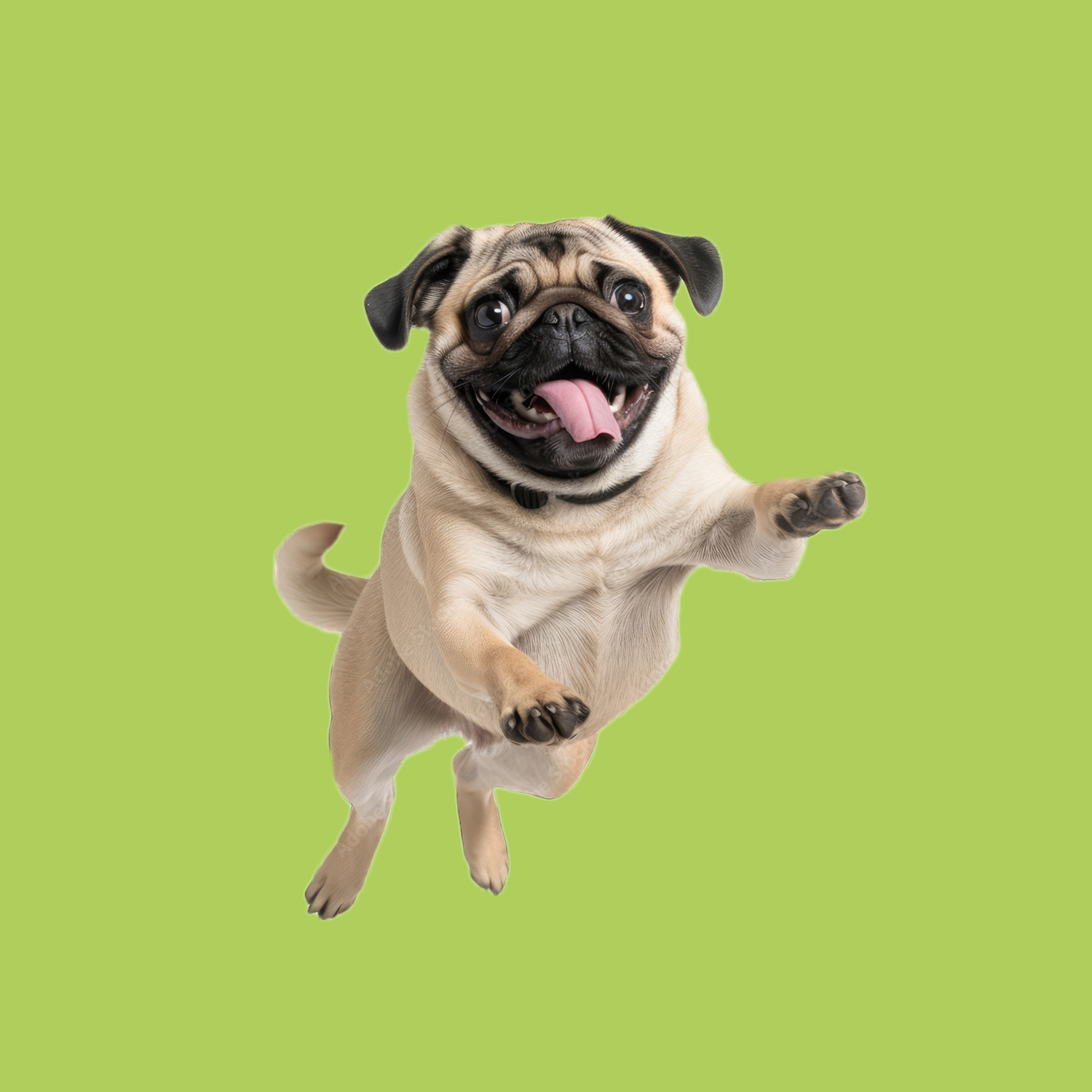Eye Problems
Pugs’ vulnerability to eye problems is largely due to their distinctive facial features. Bulldog breed-like brachycephalic (flat) facial structure characteristic of this species significantly increases the risk of corneal damage and eye trauma. Pugs can inherit progressive retinal atrophy, a degenerative eye disease that can lead to vision loss. But, hopefully, reasonable eye care practices can significantly reduce this risk.
It’s advised to keep in mind that regular veterinary examinations focusing on eye health are essential for early detection and effective management of potential eye problems in our companion animals. To prevent eye-related concerns, proper hygiene of the companion animal is necessary. By gently cleaning the facial folds and avoiding irritants, you can greatly contribute to the eye health of your important family member.
Breathing Difficulties
The brachycephalic (flat) structure of the skull makes this species of companion animal particularly vulnerable to respiratory distress. Since this health problem is more aggravated in hot or humid conditions, we recommend that you pay proper attention to the environmental conditions and keep your valued family members away from drafts and high temperatures.
Obesity
Due to their low activity level and particular love of eating, Pugs tend to gain excess weight. With that in mind, it’s important to pay close attention to how much food high in fat your furry friend is eating. A balanced diet and regular exercise are critical to preventing and managing obesity in Pugs.
Hip Dysplasia
Genetic hip dysplasia is a health condition caused by the underdevelopment of the hip joint and its elements. If our important family members aren’t diagnosed and treated in time, they may experience walking problems in the future. That’s why visiting the vet regularly and trying to keep your furry friend at a healthy weight is vital.
Dermatitis of the Skin
Skin wrinkles characteristic of Pugs are an important risk factor for the development of dermatitis. Accumulation of moisture and essential oils in skin folds can lead to infection and associated undesirable symptoms. To prevent dermatological problems, regular cleaning and proper drying of the folds is of particular importance.
Allergy
Breed-related allergies may cause itchy skin, ear infections, and gastrointestinal problems. To effectively manage an allergic reaction, consultation with a veterinarian and timely identification of allergens is an integral part of competent parenting. Although Pugs are prone to health problems, competent grooming practices, regular veterinary care, and a balanced diet will unquestionably ensure they live long and delighted lives.

